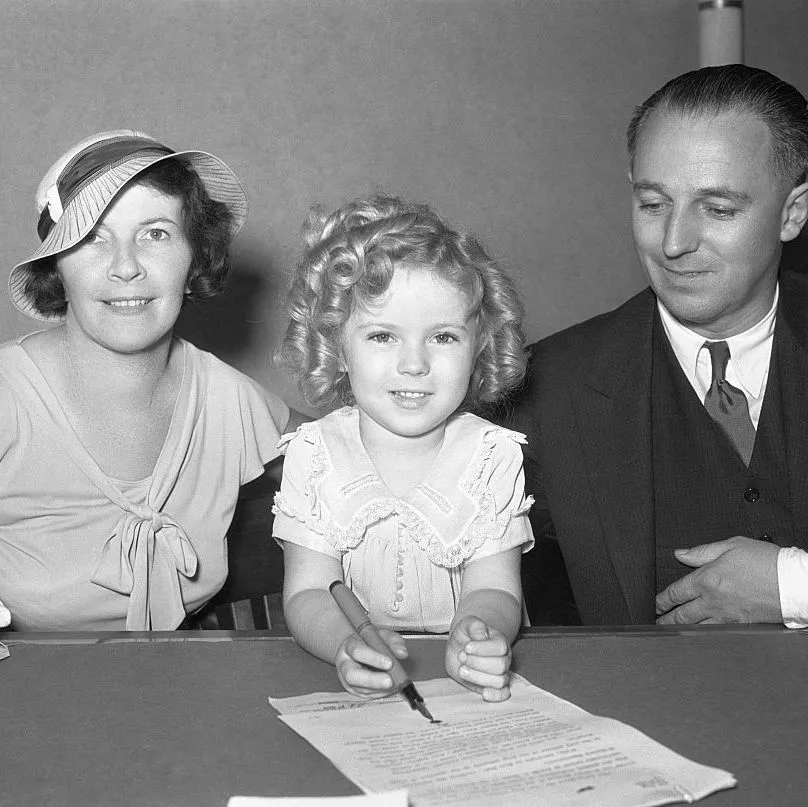Shirley Temple, the iconic child star who captivated audiences during the Great Depression, transitioned to adulthood with a much quieter fanfare compared to her childhood fame. Unlike the elaborate celebrations that marked her early career milestones, her 18th birthday in 1946 was a more intimate affair, reflecting a desire for normalcy after years in the spotlight.

Born in 1928, Shirley Temple rose to stardom at the tender age of three. Her infectious smile, undeniable talent for singing and dancing, and signature curly blonde hair made her an instant sensation. Films like "Stand Up and Cheer!" (1934) and "Curly Top" (1935) saw her box office dominance, becoming the top-grossing film star of the late 1930s. However, by the early 1940s, as she entered her teenage years, her film career began to wane.
Public interest in the once-adored child star started to shift. Studios struggled to find age-appropriate roles for the maturing Shirley. She transitioned to more serious roles, attempting to shed the image of the cutesy moppet, but audiences weren't quite ready to see her grow up on screen.

Despite the changing landscape of her career, Shirley's personal life remained relatively private. In 1945, at the age of 17, she met John Agar, a young Navy war hero, while volunteering at a military hospital. Their whirlwind romance culminated in a marriage ceremony on September 19, 1945, just a few months shy of her 18th birthday.

Unlike the elaborate child star birthday parties often documented by the press, Shirley's 18th birthday celebration on April 23, 1946, was a much smaller affair. Held at their newly-purchased home in Brentwood, California, the event was limited to close family and friends. News reports described it as a "quiet dinner party" with a birthday cake as the centerpiece.
This shift towards a more private life mirrored Shirley's desire for normalcy. Having spent her childhood under the constant scrutiny of the media, she craved a life outside the Hollywood spotlight. John Agar, a newcomer to the entertainment industry, also preferred a more low-key existence.

However, the press couldn't resist a story about the once-beloved child star reaching adulthood. Newspapers across the country ran articles with headlines like "Shirley Temple All Grown Up" and "Dimples to Debutante: Shirley Celebrates 18th Birthday." Many articles focused on the symbolic end of her childhood and the beginning of her life as a married woman.
One particularly interesting detail reported by the press was the burning of a miniature schoolhouse at the party. This was a symbolic gesture signifying the end of Shirley's mandated schoolwork on film sets, a requirement by the California Board of Education to ensure child actors received proper education.

Despite the media attention, Shirley's 18th birthday celebration remained a private affair. The focus was on her new life as Mrs. John Agar, a chapter far removed from the dazzling world of Hollywood premieres and red carpets.
Although her film career never quite recaptured the heights of her childhood, Shirley Temple continued to act throughout the 1950s. She eventually retired from acting in 1967 and transitioned into a successful career in politics, serving as a United States Ambassador to Ghana and Czechoslovakia.

Shirley Temple's 18th birthday celebration serves as a turning point in her life. It was a quiet marker of her transition from child star to adult, a desire for normalcy after years under the public eye. While the press couldn't resist a story about the iconic figure reaching adulthood, the focus remained on her personal life and a future far removed from the bright lights of Hollywood.




